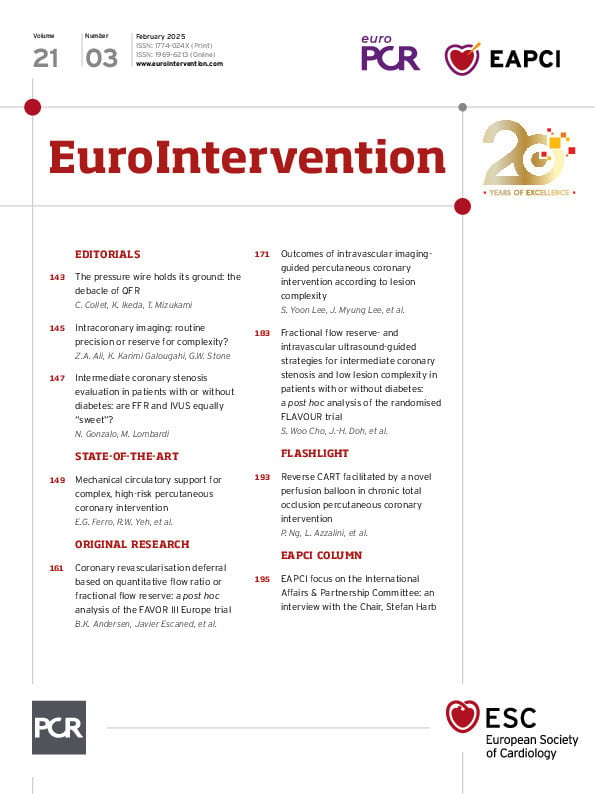In patients with stable coronary artery disease, percutaneous coronary intervention (PCI) has demonstrated clinical benefit when epicardial stenosis limits blood flow1. Physiological assessment with a pressure wire has emerged as the cornerstone for decision-making about the need for revascularisation2. One of the key elements driving the value of invasive physiological evaluation is its ability to identify lesions that can be effectively managed medically, thus avoiding unnecessary interventions3. Furthermore, physiology has been recently expanded to the prediction of angina relief after PCI, positioning physiology as a more clinically relevant tool than ever before45.
Fractional flow reserve (FFR) has long been the gold standard of physiological assessment. Quantitative flow ratio (QFR) is an alternative method that simulates FFR from angiograms. QFR aims to “simplify” functional assessment and replace pressure wires with an estimation of epicardial resistance based on quantitative coronary angiography (QCA)6. An independent evaluation has determined that the accuracy of angiography-derived FFR software (e.g., QFR, vessel FFR [vFFR], and others) is approximately 75%7. Despite its moderate diagnostic performance, questions about its clinical performance for decision-making...
Sign up for free!
Join us for free and access thousands of articles from EuroIntervention, as well as presentations, videos, cases from PCRonline.com

